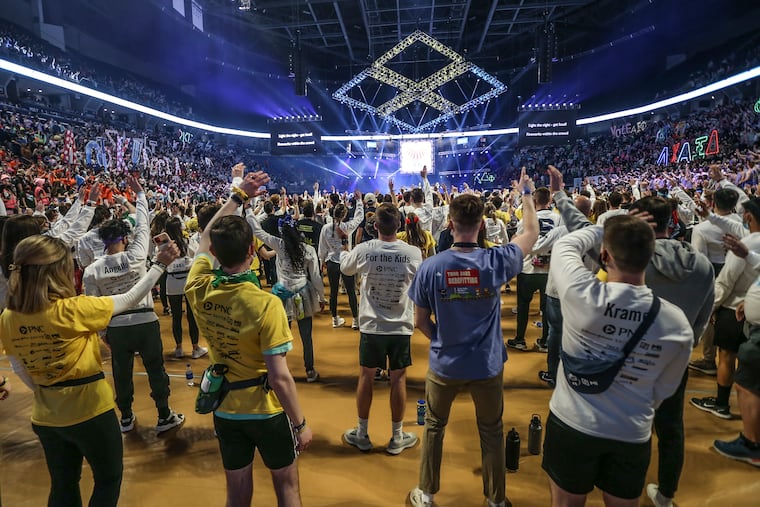Penn State’s THON dance marathon raises record $13.7 million to fight child cancer
It’s the first time since the pandemic that the 46-hour event has been held in person. Its previous fundraising record, $13.3 million, was hit in 2014.

On its 50th anniversary, Pennsylvania State University’s THON dance marathon broke a record: It raised $13.7 million to combat pediatric cancer.
That’s the largest amount in its history, breaking the record of $13.3 million set in 2014.
THON may have gotten a boost from the widespread exposure it got this year. 6ABC in Philadelphia aired a half-hour special Saturday night that was picked up by major affiliates, including New York, Pittsburgh, Harrisburg, and Scranton, reaching about 11% of American homes.
“We are extremely proud,” said student Nolan Marett, 22, of Lansdale, who served as THON’s public relations director. “It went really well.”
The event also was livestreamed, with viewers in about 80 countries tuning in over the course of the event and 8,000 viewers online when THON ended, organizers said.
The 46-hour event was held in person. Last year, it was virtual because of the pandemic, with dancers largely doing their thing at home. Even then, THON raised $10.6 million. In 2020 the last time the event was in person, it brought in $11.7 million.
» READ MORE: Penn State's dance marathon, THON, raises more than $10.6 million despite being virtual
“I feel good, feel accomplished,” said Obafemi Awodesu, a sophomore dancer from Philadelphia. “I’m not even too tired right now, to be honest.”
Owodesu was one of more than 600 dancers who took the floor at the Bryce Jordan Center on Friday night. In a scene reminiscent of pre-pandemic times, the center was often packed with thousands there to support them. The center holds about 15,000.
But new safety protocols were in place. Those entering, including dancers, staff, and spectators, were required to wear masks and show proof of vaccination or a recent negative COVID-19 test. Dancers and student event workers, who were on the floor the longest and closest to families of children with cancer, also had to show a negative test, in addition to vaccination.
Billed as the largest student-run philanthropy in the world, THON now has raised more than $203 million through its history. The money goes to the Four Diamonds charity, which supports research for a cure and families whose children get treatment at Penn State Health Children’s Hospital.
More than 16,000 students volunteer for the event. At one time, students raised money by standing at intersections and storefronts from Boston to Washington, holding cans and soliciting donations, “canning,” as it was called.
But canning began to be phased out in 2015 following the death of a student in a car accident as she returned with others from a canning weekend in Chester County. Until this year, donations had not reached the 2014 high.
Suzanne Graney, executive director of Four Diamonds, said students developed a better sustainable fund-raising model online and were “super creative during the pandemic” in making sure the event was a success. She said the record also likely was due to the increased exposure the event has gotten.
“The more people who know about our mission, the more support we get,” she said.
Minutes after THON ended at 4 p.m. Sunday and dancers could sit down, Awodesu, a Penn State soccer player, said he learned something very important over the last two days: “how to be comfortable being uncomfortable.”